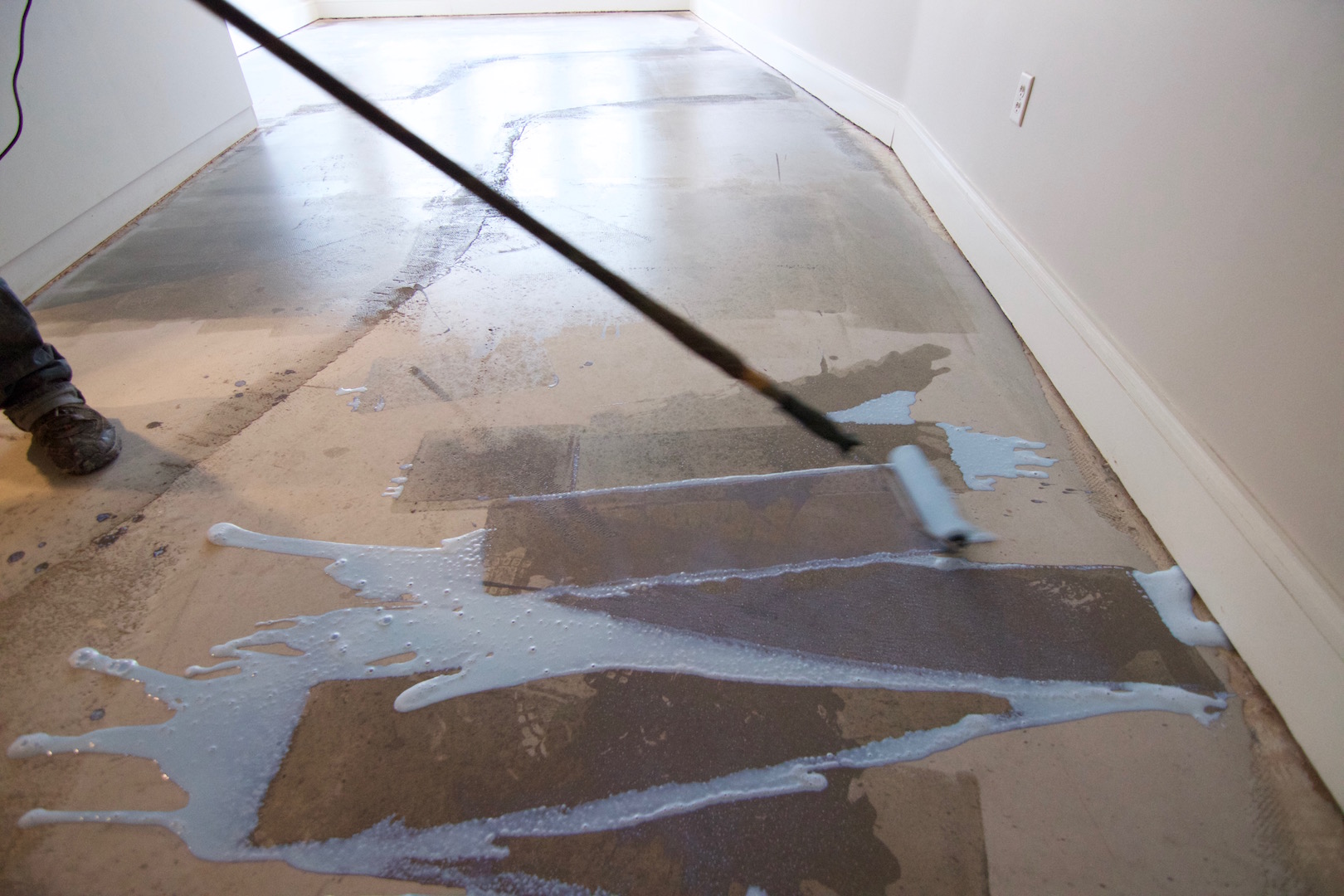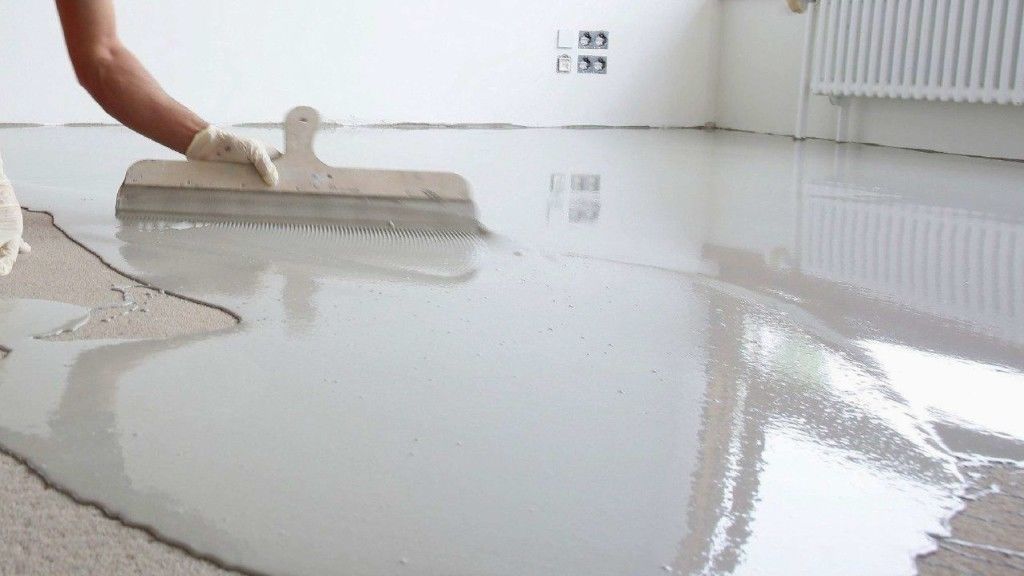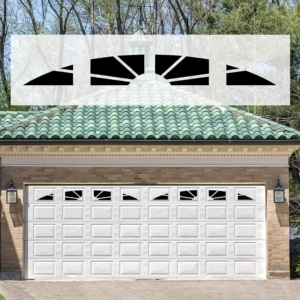Floor Leveling Compound Guide
Is your floor uneven and causing problems? Look no further than floor leveling compound. Whether you’re installing new flooring or trying to fix dips and slopes, this versatile product can be your solution. In this blog post, we will explore the benefits of using floor leveling compound, how it works, and the step-by-step process to ensure a successful application. Say goodbye to wobbly floors and hello to a smooth and level surface with the help of this remarkable compound.
What is a Floor Leveling Compound?
A floor leveling compound is a material used to correct and even out uneven or sloping floors. It acts as a self-leveling solution that fills in low spots, cracks, and imperfections in the subfloor, creating a smoother and more even surface for the installation of various flooring materials.
Definition and Purpose
A floor leveling compound, sometimes referred to as a self-leveling underlayment, is a type of specialized mortar or cement-like mixture. It is designed to be pourable and spreadable, allowing it to flow and settle into lower areas of the floor, effectively leveling it out.
The primary purpose of using a floor leveling compound is to prepare the subfloor before installing new flooring materials. Uneven floors can cause several issues, including poor aesthetics, difficulty in installing flooring materials, and even potential structural problems in the long run. By utilizing a floor leveling compound, these problems can be addressed, resulting in a flat and stable surface for the flooring installation.
Types of Floor Leveling Compounds
There are various types of floor leveling compounds available in the market, each designed to cater to specific needs and requirements. Here are a few commonly used types:
- Cementitious Floor Leveling Compound: This type of compound is made of a mixture of cement, fine aggregates, and additives. It is versatile and can be used on a wide range of subfloor materials, including concrete, wood, and existing tile floors. Cementitious compounds are known for their durability and ability to withstand heavy loads.
- Gypsum-based Floor Leveling Compound: Gypsum-based compounds are lightweight and offer excellent self-leveling properties. They are often used on gypsum-based subfloors and work well with various floor coverings such as carpet, vinyl, and laminate. However, gypsum-based compounds are not suitable for use in areas with high moisture or humidity levels.
- Polymer-modified Floor Leveling Compound: These compounds are formulated with polymers, which enhance their flexibility, adhesion, and resistance to cracking. Polymer-modified compounds are commonly used for leveling concrete subfloors and are compatible with a wide range of floor coverings.
- Rapid-setting Floor Leveling Compound: Rapid-setting compounds are designed to dry and set quickly, allowing for faster installation of flooring materials. They are an ideal choice when time is of the essence, such as in commercial projects or areas with high foot traffic.
- Self-leveling Floor Leveling Compound: As the name suggests, self-leveling compounds are specifically engineered to flow and settle into low areas, creating a smooth and level surface. They are ideal for large areas, as their self-leveling properties ensure even coverage and eliminate the need for excessive troweling or manual leveling.
Choosing the right type of floor leveling compound depends on factors such as the subfloor material, the desired thickness of the leveling layer, compatibility with the flooring material, and any specific project requirements. It is important to consult with professionals or follow manufacturer guidelines to ensure the best results.
When to Use a Floor Leveling Compound
Uneven or Damaged Floors
One common situation where a floor leveling compound is necessary is when you have uneven or damaged floors. Over time, floors can develop bumps, dips, or other imperfections due to factors like settling, moisture damage, or wear and tear. These irregularities can make it challenging to lay new flooring evenly, leading to an unsightly and unstable result. By using a floor leveling compound, you can effectively fill in these imperfections, creating a smooth and level base for your new flooring.
Before Installing New Flooring Materials
Before installing any new flooring materials, it’s essential to ensure that the subfloor is in optimal condition. Even minor irregularities can affect the appearance and longevity of your new floors. Whether you’re planning to install hardwood, laminate, vinyl, or carpet, using a floor leveling compound can help you achieve a level surface, eliminating any potential issues that may arise from an uneven subfloor.
Preparing Subfloors for Tile Installation
When it comes to installing tile, achieving a level surface is crucial. Unlike other flooring materials, such as laminate or vinyl, tiles require a solid and even foundation to prevent cracks and ensure proper adhesion. A floor leveling compound can effectively address any inconsistencies in the subfloor, allowing you to create a perfectly level surface for your tile installation. This step is especially important for larger format tiles, where even slight variations in the subfloor can result in noticeable lippage.
Filling Cracks and Gaps
Another advantage of using a floor leveling compound is its ability to fill cracks and gaps in the subfloor. Over time, subfloors can develop cracks due to various factors, including structural movement or moisture issues. These cracks not only compromise the stability of the flooring but can also lead to further damage. A floor leveling compound can penetrate these cracks and gaps, providing a seamless and solid foundation for your new flooring.
How to Choose the Right Floor Leveling Compound
Assessing the Subfloor Condition
Before choosing a floor leveling compound, it’s important to assess the condition of the subfloor. Determine if there are any cracks, unevenness, or other imperfections that need to be addressed. This assessment will help you determine the type and thickness of the leveling compound required to achieve a level surface.
Understanding Compatibility with Flooring Materials
Different flooring materials have specific requirements when it comes to leveling compounds. Consider the compatibility between the leveling compound and the flooring material you intend to install. Some compounds work well with hardwood, while others are better suited for tiles or vinyl. Ensure the leveling compound you choose is compatible with the type of flooring you plan to use.
Considering the Drying Time and Installation Process
Floor leveling compounds have varying drying times, and it’s important to consider this factor based on your project timeline. If you need to complete the installation quickly, opt for a fast-drying compound. Additionally, understand the installation process required for each compound. Some compounds are self-leveling, which means they spread out on their own, while others require troweling to achieve a level surface.
Evaluating Self-Leveling vs. Trowelable Compounds
When choosing a floor leveling compound, you will come across self-leveling and trowelable options. Self-leveling compounds are easier to work with as they spread evenly, filling in low spots on their own. Trowelable compounds, on the other hand, require manual application and smoothing with a trowel. Consider the complexity of your project and your level of experience when deciding between the two options.
By carefully considering the condition of your subfloor, the compatibility with your chosen flooring material, the drying time and installation process, as well as the choice between self-leveling and trowelable compounds, you can select the right floor leveling compound for your specific needs. This will ensure a smooth and long-lasting flooring installation that enhances the overall aesthetics and functionality of your space.
Steps to Apply a Floor Leveling Compound
Preparing the Subfloor
Before applying a floor leveling compound, it is crucial to prepare the subfloor properly. Start by cleaning the surface thoroughly, removing any debris, dust, or loose materials. Fill in any cracks, holes, or gaps using a suitable patching product and allow it to dry completely. Check the subfloor for any signs of moisture or water damage, as these issues should be resolved before proceeding with the leveling compound application. Finally, ensure that the subfloor is structurally sound and free of any weak areas that may require additional reinforcement.
Mixing the Compound
The next step is to mix the floor leveling compound according to the manufacturer’s instructions. It is vital to read and follow the directions carefully to achieve the correct consistency and ensure the compound’s proper performance. In most cases, you will need to combine the compound powder with a specific amount of water or a designated liquid additive. Use a clean mixing container and a drill with a mixing attachment to achieve a smooth and lump-free consistency. Take note of the recommended mixing time to guarantee the compound’s effectiveness.
Pouring and Spreading the Compound
Once the leveling compound is mixed thoroughly, it’s time to pour and spread it on the subfloor. Start by pouring the compound onto the lowest point of the floor and work your way towards the higher areas, allowing the compound to self-level. Use a trowel or a squeegee to spread the compound evenly, ensuring it covers the entire surface area. Pay extra attention to corners, edges, and any uneven spots, making sure they are properly filled.
Smoothing and Leveling the Surface
After spreading the compound, it’s crucial to smooth and level the surface to achieve a seamless finish. Use a long-handled straightedge or a leveling tool to glide over the compound, removing any excess and creating a flat and even surface. Pay attention to any low spots or depressions and fill them in as needed. The compound should be applied in a thickness that matches the manufacturer’s recommendations for optimal leveling results.
Drying and Curing Time
Once the compound is applied and smoothed, it needs adequate time to dry and cure. The drying and curing time may vary depending on factors such as the compound type, thickness, humidity, and temperature. It is essential to refer to the manufacturer’s instructions for specific guidelines regarding drying times. Avoid walking or placing any heavy objects on the freshly applied compound until it has fully dried and cured. This will prevent any potential damage and ensure the floor leveling compound sets properly.
Tips and Best Practices for Using a Floor Leveling Compound
Proper Surface Preparation
Before applying a floor leveling compound, it’s essential to thoroughly prepare the surface. This step sets the foundation for a seamless and durable finish. Here are some essential surface preparation tips:
- Clean the surface: Remove any debris, dirt, or grease from the floor. This can be done by sweeping or vacuuming the area.
- Repair cracks and holes: Fill in any cracks or holes in the floor using a suitable patching compound. Smooth out the patched areas to create a level surface.
- Remove existing coatings: If there are any existing coatings or adhesives on the floor, they must be completely removed before applying the leveling compound. Use the appropriate method, such as sanding or scraping, to ensure a clean substrate.
Following Manufacturer’s Instructions
Each floor leveling compound may have specific instructions provided by the manufacturer. It is crucial to read and follow these instructions carefully. The manufacturer’s guidelines will outline important details about mixing ratios, curing times, and application techniques. By adhering to these instructions, you can optimize the performance of the leveling compound and achieve the desired results.
Avoiding Common Application Mistakes
To ensure a successful application of a floor leveling compound, it is essential to avoid common mistakes that may compromise the quality of the finished surface. Here are a few key points to keep in mind:
- Apply the compound evenly: Use the recommended tools, such as a trowel or a gauged rake, to spread the compound evenly across the floor. This will prevent uneven surfaces and potential leveling issues.
- Do not overmix: Overmixing the leveling compound can lead to air bubbles and an inconsistent texture. Follow the manufacturer’s instructions regarding the appropriate mixing time to achieve the desired consistency.
- Work in small sections: To maintain control and achieve an even application, work in small sections at a time. This allows you to focus on each area and ensures a smooth transition between sections.
Ensuring Adequate Ventilation
Floor leveling compounds often contain chemicals that emit fumes during the curing process. It is essential to provide adequate ventilation in the application area to ensure safety and optimize the drying process. Here are a few tips to promote proper ventilation:
- Open windows and doors: If possible, open windows and doors to create airflow in the room. This will help dissipate any fumes and allow fresh air to circulate.
- Use fans or exhaust systems: Utilize fans or exhaust systems to further enhance ventilation. Position them strategically to direct air towards the outside, expediting the curing process.
Conclusion
Using a floor leveling compound is a cost-effective and efficient way to fix uneven floors. Whether you are renovating your home or preparing for a new flooring installation, a floor leveling compound can provide a smooth and level surface for your floors. By following the manufacturer’s instructions and properly preparing the subfloor, you can achieve professional results without the need for extensive and expensive repairs. So, if you want to ensure a flawless finish for your floors, consider using a floor leveling compound for a job well done.









